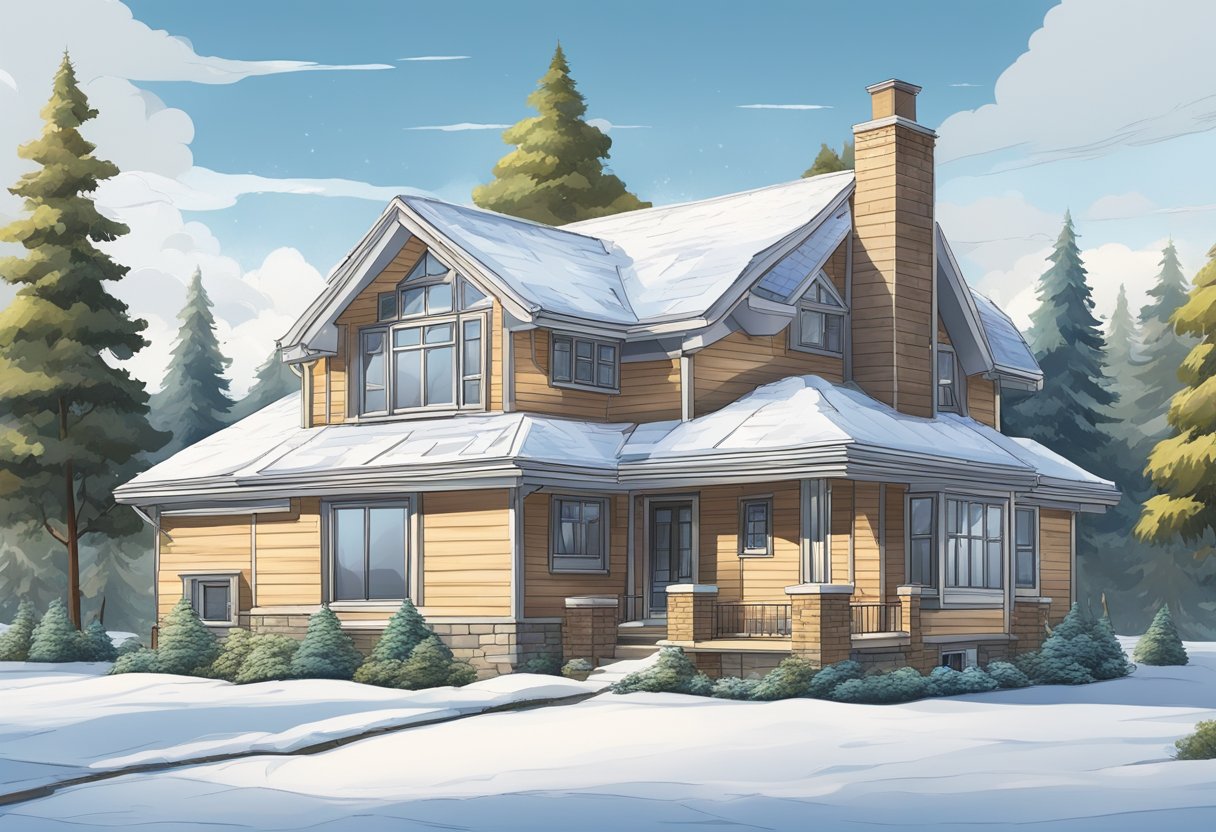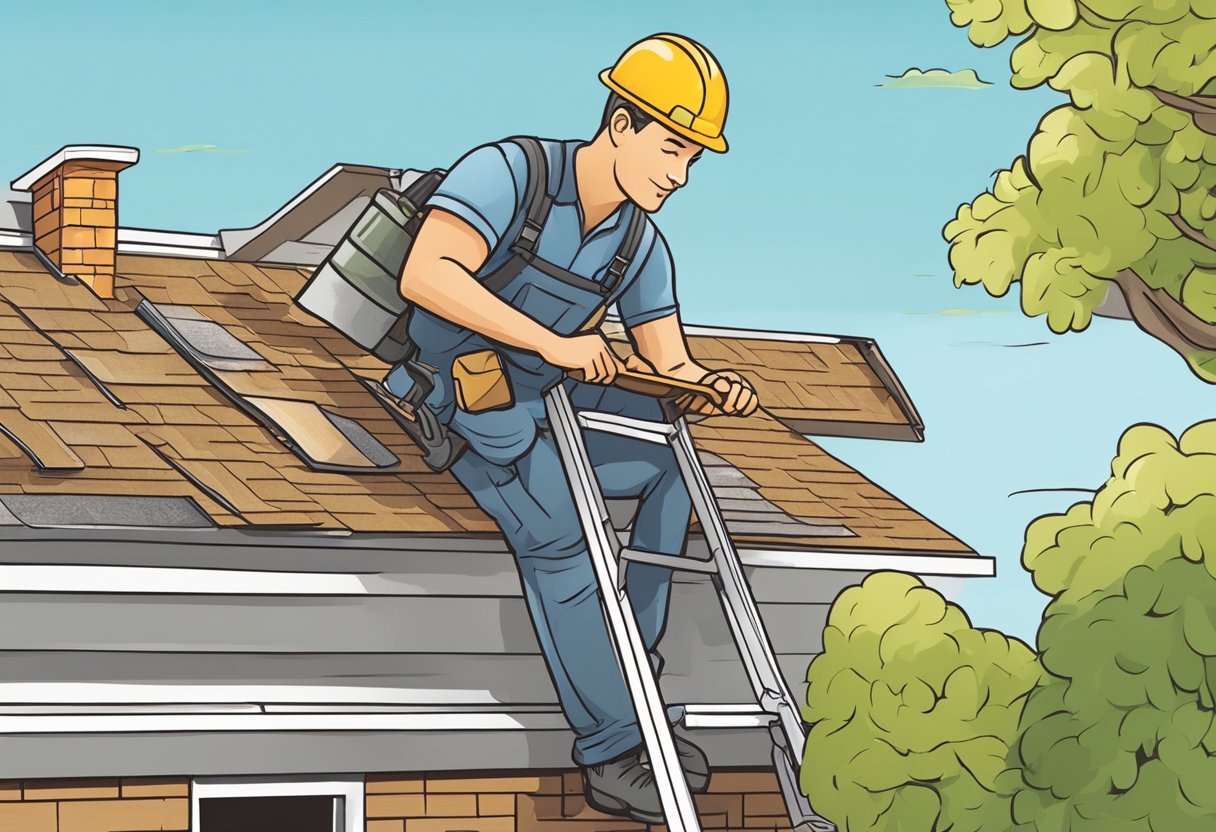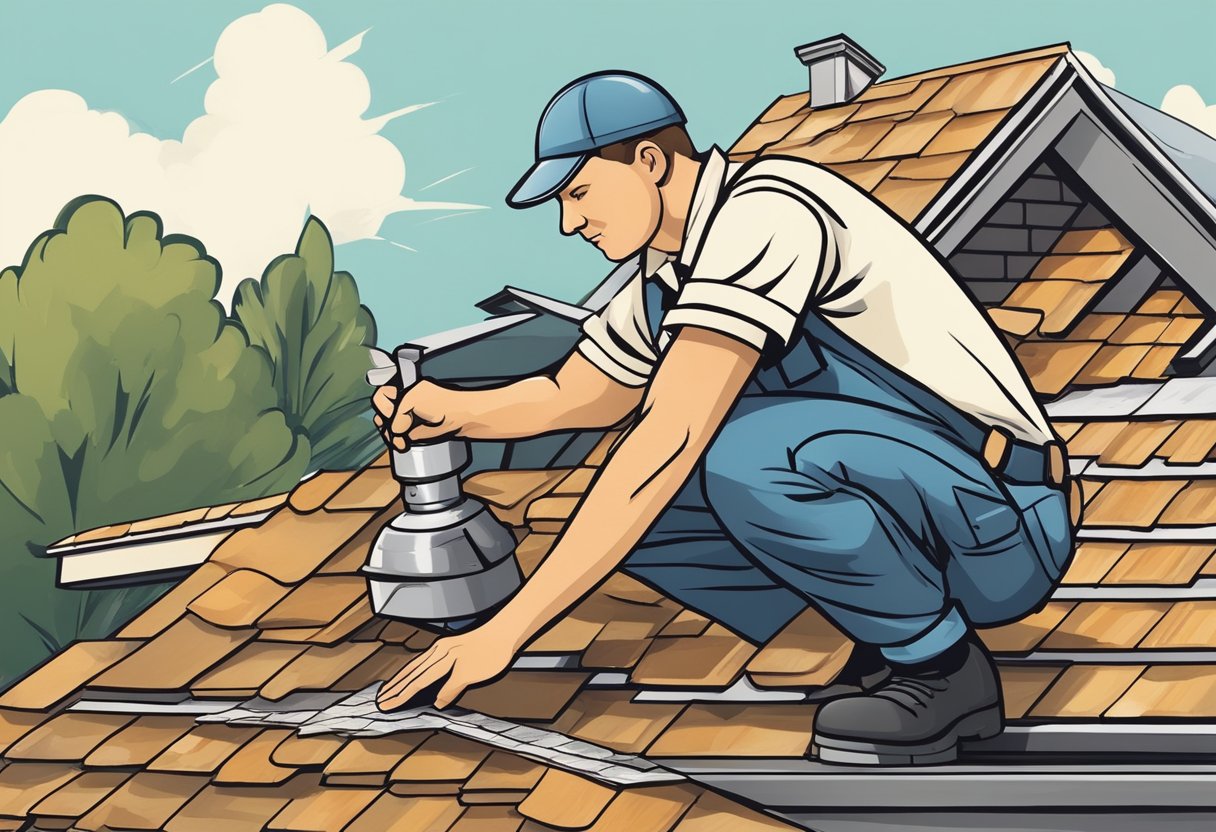Regular roof inspections are essential for maintaining the strength and sturdiness of a building. While many property owners think that inspections are only necessary after a severe storm, there are other reasons why regular inspections are more than important. Neglecting to inspect your roof regularly can lead to expensive damage and repairs in the future.

One reason why regular roof inspections are necessary is to detect any issues before they become major problems. A little leak or crack in the roof will escalate into a significant issue if it’s not fixed soon.
Regular inspections can catch these issues early on, allowing for prompt repairs and preventing more extensive damage. Additionally, inspections can identify areas that may be prone to future problems, allowing for proactive maintenance to prevent damage from occurring in the first place.
The Importance of Regular Roof Inspections

Regular roof inspections are essential for maintaining the strength and sturdiness of a building's roof. A roof inspection is a very detailed examination of a roof's condition, including its structure, materials, and overall performance.
“It is recommended that a roof inspection be conducted at least twice a year, preferably in the spring and fall.”
One of the primary reasons for regular roof inspections is to identify and address any potential issues before they become a problem. A small leak or crack in the roof can quickly turn into a major issue if left unchecked. A regular inspection can help catch these issues early, allowing for timely repairs and preventing costly damage to the building.
Another reason for regular roof inspections is to ensure that the roof is performing as it should. A un-functional roof can result in a variety of horrible issues such as
Energy Loss,
Water Damage
Structural Damage
Inspections can help identify any areas where the roof may be underperforming, allowing for necessary adjustments to be made.
Regular roof inspections are also important for maintaining the general safety and security of a building. A damaged or compromised roof can pose a significant risk to the residents in a building, as well as anyone in the surrounding area. Inspections can help identify any potential safety hazards, allowing for necessary repairs to be made before a life-changing accident happens.
Finally, regular roof inspections are essential for maintaining the following three things of a building’s roof…
Integrity
Performance
Safety
By identifying and addressing potential issues early, performing necessary repairs and adjustments, and ensuring that the roof is functioning properly, the owners can help prevent costly damage and ensure the safety and security of their residents.
Identifying Potential Problems Early

Regular roof inspections can help identify potential problems early, allowing property owners to take preventive measures before they become major issues. Some of the most common problems that can be identified during a roof inspection include:
Cracks and punctures, which occur due to normal wear and tear or as a result of storm damage. If left unaddressed, they can lead to leaks and water damage.
Missing or damaged shingles, can compromise the integrity of the roof and leave it vulnerable to the elements.
Clogged gutters and downspouts can cause water to pool on the roof, leading to leaks and water damage.
Improperly sealed flashing can allow water to seep into the roof and cause damage to the underlying structure.
By identifying these problems early, property owners can take the proper steps to address problems before they become major issues. This can help extend the longevity of the roof and save tons of money avoiding repairs down the road.
In addition to identifying potential problems, regular roof inspections can also help property owners stay on top of routine maintenance tasks, such as cleaning gutters and downspouts, trimming overhanging branches, and removing debris from the roof. By staying on top of these tasks, property owners can prevent the problems from occurring in the first place.
Overall, regular roof inspections are an essential part of maintaining a healthy roof and protecting the property beneath it. By identifying potential problems early and staying on top of routine maintenance tasks, property owners can help ensure that their roof lasts as long as possible and provides reliable protection for years to come.
Extending the Lifespan of Your Roof
Just like how you prioritize yearly check-ups for your health, your roof also requires regular inspections! A brief roof examination can detect small issues before they escalate into significant, costly problems. Here are some tips to maintain the health and longevity of your roof:
Keep Your Roof Clean
Debris such as leaves, branches, and dirt can accumulate on your roof, leading to damage over time. Regularly cleaning your roof can help prevent this damage. Utilize a broom, leaf blower, or pressure washer to easily and safely remove debris from your roof.
Trim Overhanging Branches
Overhanging branches can scratch and damage the roof, especially during strong winds. Trimming these branches can extend the lifespan of your roof.
Inspect Your Attic
Your attic can provide valuable insights into the condition of your roof. Check for signs of water damage such as stains or mold. If you notice any issues, seek professional help to address them before they cause further damage.
Address Minor Issues Promptly
Minor issues like cracked or missing shingles can lead to more severe problems if ignored. Regular inspections can help identify these issues early on, allowing you to address them promptly and prevent further damage.
By following these tips and scheduling regular roof inspections, you can prolong the lifespan of your roof and avoid expensive repairs in the future.
Maintaining Roof Warranty Requirements
Most roof manufacturers mandate regular inspections and maintenance to uphold your warranty. Neglecting your roof could result in you being responsible for costly repairs.
Schedule regular inspections by hiring a qualified Houston roofing contractor to inspect your roof at least once a year.
Understand your warranty and its specific requirements.
Maintain your roof by cleaning gutters, trimming trees, and removing debris to prevent damage.
Use materials approved by your roof's manufacturer.
Hire a certified installer to ensure your roof is installed correctly to avoid warranty issues.
By maintaining regular inspections and adhering to warranty requirements, homeowners can ensure their roofs remain in excellent condition and that any necessary repairs are covered under warranty.
Ensuring Energy Efficiency
Regular roof inspections not only help identify potential storm damage but also ensure the roof is energy-efficient. An inadequately maintained roof can lead to significant energy loss, resulting in higher energy bills.
One common cause of energy loss is air leaks. These leaks can occur around vents, chimneys, and other roof penetrations. During a roof inspection, the inspector will check for air leaks and recommend necessary repairs.
Another factor affecting energy efficiency is insulation. Inadequate insulation can lead to heat loss in winter and heat gain in summer, increasing energy bills. During a roof inspection, the inspector will assess insulation and recommend necessary upgrades.
Additionally, the color of the roof can impact energy efficiency. A lighter-colored roof reflects sunlight and reduces heat absorption, resulting in lower energy bills. During an inspection, the inspector can evaluate the roof color and suggest any necessary changes.
Regular roof inspections are crucial for ensuring an energy-efficient roof and identifying potential issues before they escalate. By maintaining an energy-efficient roof, homeowners can save on energy costs and reduce their carbon footprint.
Preventive Measures Against Seasonal Challenges
Regular roof inspections can help identify potential issues before they become significant problems. Taking preventive measures can address seasonal challenges that may cause roof damage. Here are some preventive measures to protect your roof:
1. Clean Gutters and Downspouts
Regularly cleaning gutters and downspouts can prevent water backup and damage to the roof.
2. Trim Trees Near the Roof
Trimming trees that are too close to the roof can prevent damage during storms or high winds.
3. Inspect and Repair Flashing
Regularly inspecting flashing can identify areas needing repair to prevent roof leaks.
4. Check for Signs of Animal Damage
Inspect for any signs of animal damage to prevent issues such as scratches or nests causing water damage.
By implementing these preventive measures, homeowners can safeguard their roofs against seasonal challenges and extend their roof's lifespan. Regular roof inspections can help identify potential issues early on, saving homeowners time and money in the long run.
Components of a Comprehensive Roof Inspection
Regular roof inspections are essential for maintaining the integrity and longevity of a roof. A comprehensive roof inspection involves examining various components of the roof to identify any potential issues that may require repair or replacement. Here are the four main components of a comprehensive roof inspection:
Structural Inspection
The structural inspection involves examining the roof's support structure to check for any signs of damage or instability.
Material Inspection
The material inspection involves examining the surface materials of the roof for wear and tear or damage caused by weather events.
Interior Inspection
The interior inspection involves examining the underside of the roof for signs of water damage or pests.
Workmanship Inspection
The workmanship inspection involves evaluating the installation and maintenance history of the roof.
A comprehensive roof inspection helps identify potential issues early on, ensuring the safety and longevity of the roof.
When to Schedule Roof Inspections
Regular roof inspections are vital for maintaining the integrity of your roof and preventing potential damage. The frequency of these inspections will depend on factors such as the age of your roof, roofing material, and local climate conditions. Generally, it's recommended to have a professional inspection at least once a year.
Consider scheduling more frequent inspections if you live in an area with harsh weather or if your roof is older or has experienced previous damage. Additionally, schedule an inspection after major weather events like hail storms or heavy winds to identify any storm-related issues.
Scheduling regular roof inspections can help prevent damage, prolong the life of your roof, and save money on costly repairs in the long run.
Professional vs. DIY Roof Inspections
While DIY roof inspections may seem cost-effective, professional inspections offer many advantages. Licensed roofing professionals have the knowledge, experience, and tools to conduct thorough inspections and provide recommendations for maintenance and repairs.
DIY inspections may not be as accurate or safe as professional inspections, potentially leading to costly repairs in the future. Hiring a licensed roofing professional for regular inspections ensures the longevity and safety of your roof.
Understanding the Inspection Report
When a professional roofing inspector completes an inspection, they will provide a detailed report outlining the roof's condition and any recommended repairs or maintenance. Understanding t he contents of the report is crucial for making informed decisions about your roof's upkeep.
he contents of the report is crucial for making informed decisions about your roof's upkeep.
Review the report carefully, ask questions to clarify any unfamiliar terms, and ensure you understand all findings. This will help you make informed decisions and maintain your roof in good condition.
The Economic Benefits of Regular Inspections
Regular roof inspections offer economic benefits by extending your roof's lifespan, improving energy efficiency, and preventing liability issues. Investing in regular inspections can save money in the long run by identifying and addressing issues early on.
By catching small issues before they escalate into significant problems, regular inspections can help homeowners and businesses save on repair and replacement costs. Improving energy efficiency through inspections can also lead to savings on utility bills. Preventing liability issues can protect against costly legal fees and settlements.
In conclusion, regular roof inspections provide economic benefits by prolonging a roof's lifespan, improving energy efficiency, and preventing potential liabilities. Homeowners and businesses can save money in the long run by investing in regular inspections and addressing issues promptly.